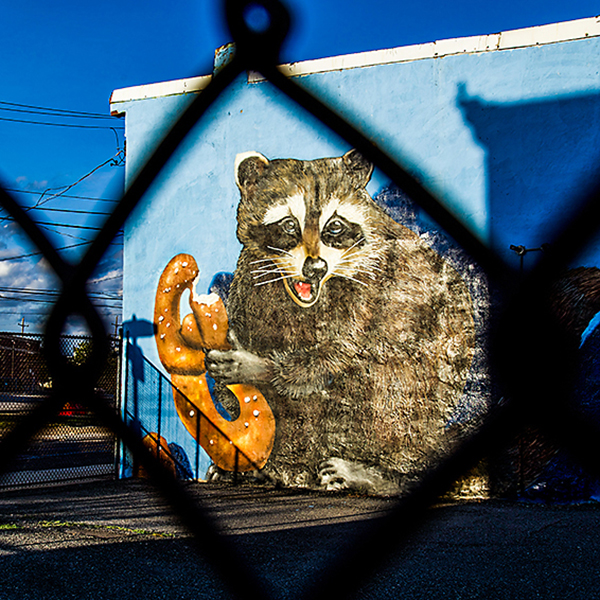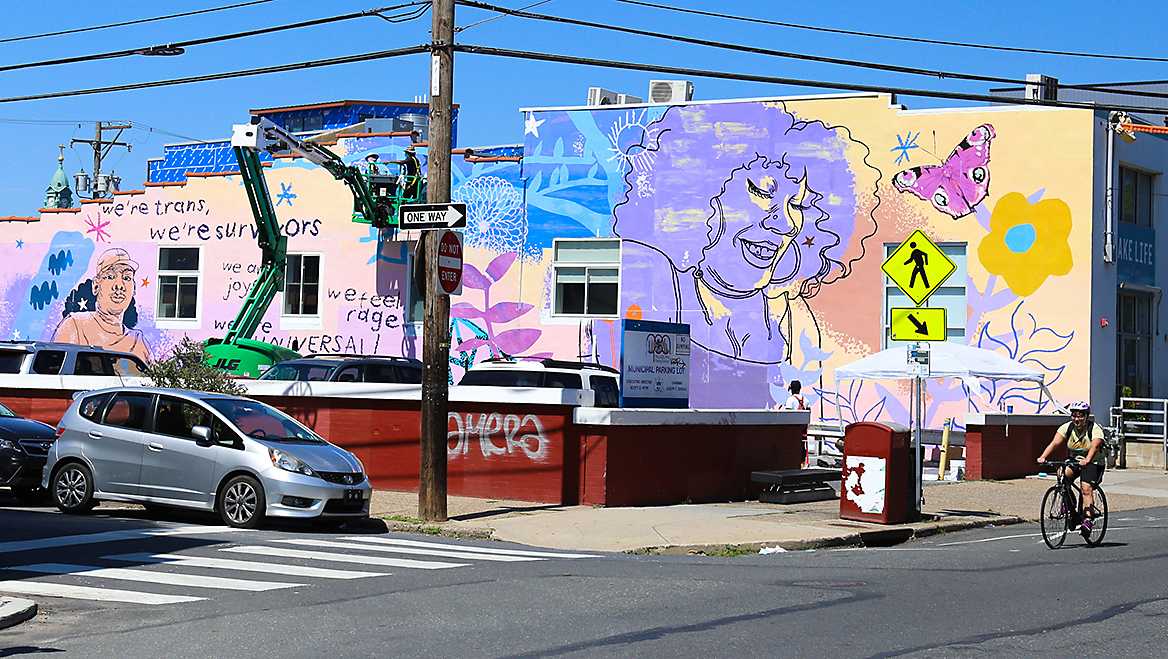March 1, 2023
In Philadelphia, art is everywhere.
As the unofficial mural capital of the world, it is home to a dizzying number of these works painted by artists from around the city. The walls around our city tell the stories of our residents. Sometimes that means figurative murals of real-life local leaders and activists. Sometimes that means working with local abstract painters to inspire our eyes and minds. And sometimes still, that means a mural of a happy raccoon eating a Wawa pretzel. Philly has 4,000 murals and they all come from different processes, but at the end of the day, they're all representations of the people of this city.
Philly's mural-making method is community-based. This is in large part driven by the practices of Mural Arts Philadelphia, the nation's largest public arts program that's been operating in one form or another since 1984. From its origins as a small city office to its nationwide status today, Mural Arts has grown into a cultural pillar in Philadelphia.
As I started to travel more for my own business, a blog I started in 2011 that explores art in the public space, StreetsDept.com, the importance of community-driven art became more evident to me, especially because these murals are made with the cultures, identities, and experiences of residents at the forefront.
Community-driven murals reflect local identities
As a queer man born in 1985, I remember that the late 1990s and early 2000s offered little to no representation of LGBTQ+ culture in the mainstream, let alone in the art that flanked my city. It was soul-crushing to never see my humanity reflected in the world around me. It makes me admire the revolutionary work of queer street artists like Keith Haring, who left tokens around New York City, Philly, and other cities in the 1980s for LGBTQ+ kids to see and feel seen. This is what public art can do: remind people that they are an important part of the fabric of their community.
But public art is by no means one-size-fits all. Here are three ways mural artists seek to create belonging in their communities.

Happy Raccoon by V.U.R.T. Creative, E. Sergeant St. and Webb St., Port Richmond.

Untitled by Winnie Sidharta, S. Hicks St. and Moore St., Point Breeze.
1. Reflecting and celebrating local cultures
A mural by Winnie Sidharta in the Point Breeze neighborhood honors the story of immigrants in Philadelphia. Situated on the side of Indonesian restaurant Hardena, the untitled piece "tells the story of the Indonesian immigrant experience, showcasing traditional design and art along with depictions of life in Philadelphia." Sidharta's mural unites the diverse Southeast Asian communities that make up the South Philly neighborhood.
The project's website explains, "It also incorporates cultural references from Cambodia and Vietnam, two groups who also have a strong presence in the immediate neighborhood. In the center of the piece is a mountain often depicted in shadow puppetry, with the tree of life, and a representation of how the ideal home is depicted in Indonesian art."
2. Promoting wellness
"Living in an urban environment can be stressful and chaotic at times. However, I try to find the moments where I can convey relief and ease," says the muralist, Branche Coverdale, whose expressive style draws from the cartoons from his youth. His mural Fuzzy Slippers fuses themes of emotional wellbeing with the freedom that can be found in city life.
Coverdale reflects, "I capture that moment of joy and relief from unpleasant realities by seeking entertainment in fantasy. The characters channel a childlike liberation and cartoony elasticity. I hope the viewer can see themselves here, in this city, surrounded by buildings, trying to find happiness and lightness within the concrete city."

Convergence by Andréa Grasso, 8th St. and Manton St., South Philadelphia.
Andréa Grasso also saw an abstract response to our city life in a 2021 piece titled Convergence. Grasso, who has a planning background, describes his work as "architectural in nature." The muralist offers a solution to monotony in urban life: "Our cities can so often be square, boring, and full of gray/brick color. Because of that I decided to start making art that is the opposite. Almost like if you took all the components that went into building a house, threw them in a blender with a bunch of color, and made something beautiful out of the chaos that ensued."

Flight in-process by Tatyana Fazlalizadeh, 13th St. and Spruce St., Center City.
3. Amplifying community perspectives and power
Flight in-process by Tatyana Fazlalizadeh is the first mural in a series that pictures what it would be like for Black people to rise off the ground into the sky. The bottom of the mural reads: "I let go of what has weighed me down. / Light as a feather, I ride the wind. / Like Black folks have always done. / Flying free above the structures built to confine us."
The artist channeled the real experiences of community members when conceptualizing the mural. Fazlalizadeh shared on Instagram, "[I] interviewed ... several Black people about the idea of our ability to fly. Photographed them. Discussed freedom and healing with them."
Legacy and connection were important to the artist, who lived in the building as a teenager. After the mural's completion, Fazlalizadeh wrote: "This painting, 100 feet in the air, is so special to me. I lived in the building it is painted on when I was 17 years old. This series is so special to me. I've long wanted to create it and join the long list of Black artists and writers who have used the mythology of Black folk flying in their work."

We Are Universal by Kah Yangni, Frankford Ave. and E. Thompson St., Fishtown.
On a wall in the busiest street in Fishtown, the voices of Philly's transgender and nonbinary community come alive. We Are Universal by Kah Yangni was created over the course of a year of meetings with residents at Morris Home. According to their website, the home is "the only residential recovery program in the country to offer comprehensive services specifically for the transgender community."
Yangni's mural features two large-scale portraits of residents of Morris Home, Tazmere Stephens (left) and Jourdyn Carter (right), surrounded by blooming floral imagery and a butterfly in flight with the words, "We're trans / we're survivors / we are joyful / we feel rage / we are universal!"




